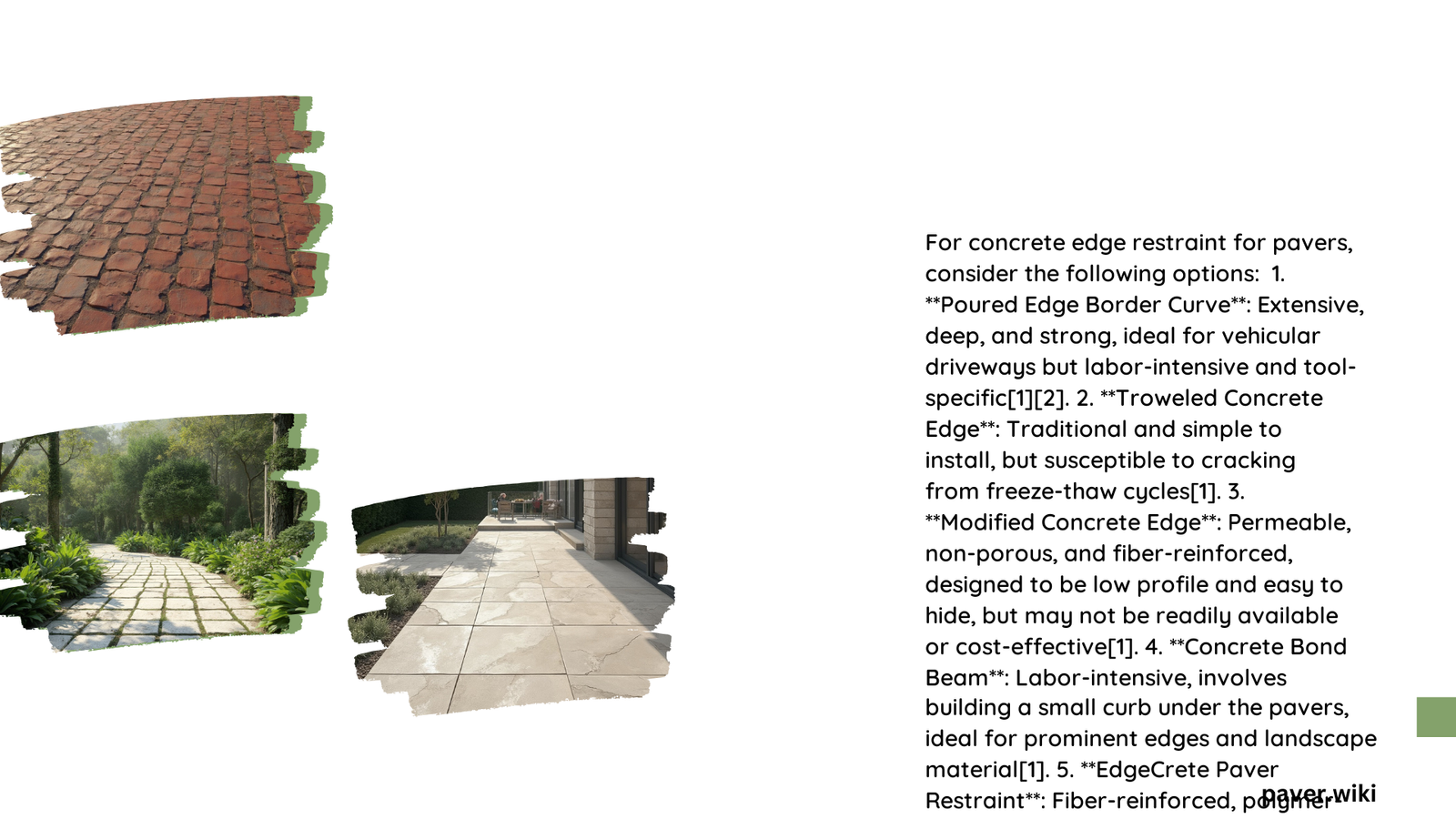Concrete edge restraint for pavers is a crucial component in hardscape installations, providing stability and longevity to paver projects. This system prevents lateral movement of pavers, distributes loads evenly, and extends the lifespan of installations. Proper installation of concrete edge restraints ensures pavers remain in place, resisting forces from traffic, weather, and soil movement. This guide explores installation techniques, benefits, types, and the impact on paver stability.
What Are the Installation Techniques for Concrete Edge Restraint for Pavers?
Installing concrete edge restraint for pavers requires careful preparation and execution. Here’s a step-by-step guide:
Tools Needed:
- Work gloves
- Small sledgehammer
- Trowel
- Snap-edge cutters or saw
- Garden hose
- Paver mallet
- Level (2ft, 4ft, 6ft)
Installation Steps:
- Base Preparation
- Extend base material beyond final paver edge by at least the thickness of the base
-
Example: 6-inch thick base should extend 6 inches beyond final paver
-
Bedding Layer Preparation
- Use trowel to scrape back bedding layer
- Create space for edge restraint
-
Wet sand for easier manipulation
-
Edge Restraint Installation
- For concrete mix:
- Combine concrete with fibers as per manufacturer instructions
- Apply mixed concrete to replace undermined bedding material
- Taper up approximately half an inch along paver edge
-
For precast concrete or cut stone:
- Ensure it extends full depth of base material
- Compact into place
-
Securing the Restraint
- On rigid concrete base:
- Use explosive charge for direct fastening, or
- Drill holes and anchor with wedge, strike, drop-in, or expansion anchors
-
For residential applications:
- Use non-galvanized spikes
- Place every 12 inches for pedestrian traffic
- Place every 6 inches for vehicular traffic or curved sections
-
Finishing Touches
- Cover edge restraint with extra sand, gravel, or dirt
- Protect from sun exposure
- Ensure top surface is level and slightly recessed
What Are the Quantifiable Benefits of Using Concrete Edge Restraint for Pavers?

Concrete edge restraints offer several measurable advantages:
Stability Metrics
- Prevents paver spreading due to horizontal forces
- Resists movement from traffic and freeze-thaw cycles
Cost-Effectiveness
- Average cost: $3 to $10 per linear foot
- Varies based on type and installation complexity
Long-Term Durability Statistics
- Fiber-reinforced concrete remains intact even if cracked
- Properly installed restraints can last decades
- Minimal maintenance required
What Are the Different Types of Concrete Edge Restraint Available for Pavers?
Concrete edge restraints come in various forms, each with unique characteristics:
Precast Concrete Edge Restraint
| Specification | Details |
|---|---|
| Thickness | Typically 6 inches (150 mm) or more |
| Weight | Heavy, providing substantial stability |
| Compatibility | Suitable for compacted aggregate or concrete backfill |
| Applications | Residential and light-duty commercial use |
| Performance | High stability, ideal for weak soil areas |
Troweled Concrete Edge Restraint
| Specification | Details |
|---|---|
| Thickness | Covers at least 2/3 of edge paver sides and bedding sand |
| Weight | Lighter than precast units |
| Compatibility | Applied without forms on compacted base |
| Applications | Pedestrian traffic and residential driveways |
| Performance | Remains intact despite potential cracking |
How Does Concrete Edge Restraint Enhance Paver Stability?
Concrete edge restraints significantly improve paver stability through:
Load Distribution
- Evenly distributes load across pavers
- Prevents individual paver shifting or uneven settling
Resistance to Lateral Movement
- Keeps pavers tightly together
- Resists horizontal forces from traffic and environmental factors
Impact on Paver Lifespan
- Prevents spreading and settling
- Extends installation lifespan to decades with minimal maintenance
By providing these crucial functions, concrete edge restraints ensure the longevity and stability of paver installations, making them an essential component in hardscape projects.
